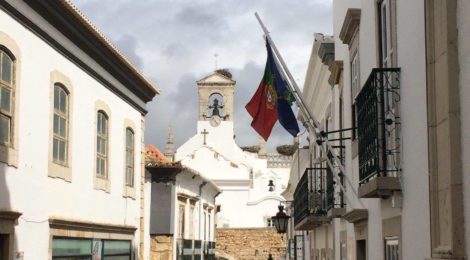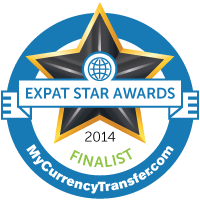
Exploring Portugal: A self-drive road trip from south to north
I’ve previously written about my father’s home in northern Portugal, and the fantastic holidays I’ve had visiting Porto, Coimbra and exploring the rural woodland countryside around the Duoro Valley and Estrella Mountains (that post is here if you’re interested).
I also now have family in southern Portugal too, so on the last holiday, we decided we would take a road trip from the south to the north, to visit our families, and explore the beautiful country more. We were limited for time, taking a week for this little break, so it was a little more rushed than we perhaps would have liked, but still a great trip and well worth doing.
Stop 1: Faro
We flew from Bournemouth to Faro in The Algarve, the flight options were fairly limited and had us arriving late on the Saturday night, so we decided to stay that night in Faro itself at Hotel Eva which was on the marina, and close to the airport. We took the Sunday morning to wander around the town, and it completely exceeded by expectations. To be fair, I hadn’t expected much, as far as I was aware, it was an arrival point for tourists who quickly disembarked and flocked along the coast in their droves to the beaches of The Algarve. However, it’s a pretty little town and well worth a morning’s wander along the cobbled streets, between beautiful old stone whitewashed buildings and orange tree groves. Don’t miss the beautiful cathedral, and keep your head up to see all of the impressively large stork nests on the street lights, numerous church steeples and cathedral bell towers.
The one point to note is that everything is closed on a Sunday, so we didn’t get to see as much as we would have liked, and ended up taking the 50 minute round trip on the little tourist train through the old town from the Jardim Manuel Bívar gardens. We made sure we had a refreshment stop for some delicious meat and cheese tapas and sangria – and the speciality flambeed chorizo – with a view on top of the old town walls at O Castello, before getting a taxi down the cost to our next destination with our hosts in Vilamoura.
Stop 2: Vilamoura
It was great to catch up with family here, and indulge in some delicious food and drink in Vilamoura and Quarteira. Our favourites were definitely the seafood cataplanas, arroz de Marisco (the Portuguese version of a paella), local clams with garlic and white wine (ameijoas a bulhao pato), fish stews, and the family favourite – fresh rotisserie chickens – all washed down with local wines and amarguinha liqueur, made locally from almonds (and so good we had to bring a bottle home!)
The marina is a great place for a wander, and to take breakfast and/or lunch by day, and a lot of fun at night, as there are plenty of bars located by the water. Plus there are lots of exciting boat trips that leave from here, so it’s worth researching the options. As we wanted to maximise time with family, we only took one day exploring on our own, and opted for one destination, a bit further away, rather than exploring lots of places closer by, so we doubled back on ourselves and headed across the border for a day trip to Seville, Spain.
Stop 3: Seville, Spain
So, in theory it’s only a 2-2.5 hour drive from Vilamoura to Seville, with no need to stop at the border. However, we made a few wrong turns and stopped for breakfast on the way, so it took us nearly three hours, and what no one had mentioned is that the clocks are an hour ahead in Seville, so by the time we arrived we only really had a few hours to visit the tourist attractions (a lot of which close quite early). It took a while to realise our mistake, but actually it didn’t really affect us. We opted for the City Sightseeing hop-on hop-off bus (always a good way to see the city and get your bearings) and headed for the Plaza del Triunfo, via the Torre Del Orro, where we gazed in awe at the Alcazar, and Seville Cathedral/Basilica. The queues were already too big when we arrived, so we took to wandering around the small streets of Barrio Santa Cruz, where we indulged in yet more delicious tapas, olives and sangria. We also managed to get across to Metropole Parasol, Seville’s modern architectural icon, and the world’s largest wooden structure, and around which the streets seemed to be full of creativity, with everything from tattoo parlours and boutique shops, to quirky cafes and restaurants. Our final stop was the Parque Maria Luisa, and specifically the Plaza de Espana, which was originally built for the Expo in 1929, and is still a very beautiful spot.
Stop 4: Evora
The drive from Vilamoura to my father’s place in Carregal do Sal in the north was around six hours, however the scenery was outstanding and I was happy to be driving. We broke up the journey with a lunchtime stop in the medieval town of Evora. We stretched our legs wandering around the ruins of the Roman Temple of Diana and Evora Cathedral, and took our lunch in the historic convent in the same square at Restaurant da Pousada de Evora. After lunch, we took a walk to Praca del Giraldo, the town’s main square at the centre of the Unesco world heritage site. The square was picturesque with a water fountain in the centre and lots of cafés and bakeries (pastelaria) around the edges, where we were treated to the best pastel de nata (Portuguese custard tarts) we’ve ever had. Unfortunately we didn’t get a chance to explore the Church of St Francis, with its unique bone chapel, that will have to be for another time.
Stop 5: Carregal do Sal
Again, our time in this tiny rural village of northern Portugal was spent catching up with my dad, indulging in local foods (here much of the hams, cheeses, sausages and blood sausages with bread and olives, and washed down with local wines, particularly the vino verde – green wine). It’s a great base for walks and exploring beautiful countryside, but the full details are in my original post here. This time we went over the river to Tabua, to the local Sunday market, and to explore the beautiful trails through the woodland and olive groves, choosing to do this rather than head back to Coimbra, Portugal’s university town (although if you’re going to Portugal, I’d definitely recommend a visit!)
Stop 6: Porto
We took a day trip to Porto (about 1.5 hours drive), which we’ve done several times before (I normally fly in here when I visit) and took some time to explore the old town and the Church of San Fransisco (we may have missed them in Evora, but we saw a crypt full of bones here!), Clerigos Church and Porto Cathedral, as well as wandering along the Case de Ribiera, the popular area along the river bank, full of restaurants and cafes. Here we indulged in a Francesinha out in the fresh air – basically a sandwich full of ham and sausage, covered in cheese and soaked in a tomato and beer sauce – it’s incredibly rich so make sure you work up an appetite for it! We also crossed the river to the distillery district and had a tour of the Calem port distillery, where we tried white and tawny ports.
Stop 7: Tomar
We wanted to spend a couple fo day’s in Portugal on our own after visiting family, so had decided to head to Lisbon at the end of the trip and fly home from there. It was a two and a half hour drive from Carregal do Sal to Lisbon, which we broke up by stopping off in Tomar, a city found by the Knights Templar. We didn’t want to stop for too long, so spent all of our time exploring the awe-inspiring Convento de Cristo (part convent, part castle).
Stop 8: Lisbon
Our final destination on this trip, and a place we both fell in love with. I’m planning on writing a more detailed post about the city, however for now I would recommend staying central – we dropped off our hire car and explored everywhere on foot (although next time, we’ll be looking to head out to Sintra and Cascais too). We stayed at the PortoBay Liberdade for a couple of days for a bit of luxury at the end of the stay, which gave us a beautiful walk down the tiled Avenida de Liberdade every morning, stopping at the best pasteis de nata shop in town, Fabrica da Nata, to keep us going!
We spent our time in the old town, wandering around the streets, and people watching from local cafe’s in the sun. We explored the back streets, the street art and the numerous tram stops, tasting the local cheery gin/brandy at its original birthplace, Ginjinha, a walk up bar in the street. After all of the holiday’s indulgences (and a particularly juicy suckling pig roll), we chose to walk rather than take the tram up to the Se de Liboa, Lisbon’s famous cathedral, stopping only to enjoy jugs of white sangria on the streets, and wandered over the cobbles through Bairro Alto and Alfama.
Our last night was a particular highlight for us though, when we headed back to Alfama for an traditional evening of fado music in a basement. This traditional Portuguese folk music is melancholy by nature, and normally has one person playing a guitar and mandolin, with one Fadista singing poetic lyrics related to the darker elements of love, death and sadness, and both of them eyes closed, swept up in the passion. So hauntingly beautiful and mesmerising, it’s best to try and eat your food (we opted for traditional baccalau – salt cod) between performances so that they can have your full attention. I’d highly recommend Clube de Fado – just make sure you book in advance!
Even as I write this, I can’t believe we covered so much in such a short space of time, and had such fantastic memories with our families. I’d definitely recommend hiring a car if you visit Portugal so that you can explore more of what this amazing country has to offer. I know we’ll be back, so do let me know if you have any other places you think we should take in on the next trip! Obrigado!











